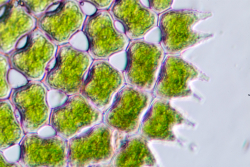Phytoplankton responses to environmental change
Phytoplankton are microscopic marine organisms that, like plants, use photosynthesis to obtain energy. They play vital roles in all ocean and freshwater ecosystems by removing carbon dioxide from the atmosphere and by sustaining aquatic food webs. Since phytoplankton float on surface waters, they are sensitive to any disturbances in ocean currents. Although scientists predict that the magnitude and frequency of events like storms and drought will increase with climate change, their effects on phytoplankton are not known. The EU-funded CONPLANK(opens in new window) (Continuous measurements of plankton and environmental variables: Towards assessment of phytoplankton community response to environmental change) initiative studied how environmental variations affected phytoplankton on both short (minutes to hours) and long (seasons and years) timescales. Researchers did this using an automated machine called an Imaging FlowCytobot (IFCB). This combines microscopy with an instrument that sorts and counts cells, to capture individual cell images that are then classified into species and groups. Using data from Port Aransas (Texas, United States) and the north-western Gulf of Mexico, researchers showed that most phytoplankton species are not influenced by seasons. They are, however, affected by tropical cyclones, upwelling events and droughts. In response to cyclones, phytoplankton species' compositions changed and became more abundant overall. Upwelling events, meanwhile, increased the amount of a diatom species in both Port Aransas and the Gulf of Mexico, suggesting that the effect is widespread. In contrast, drought in Texas decreased both abundance and species diversity. By genetically analysing phytoplankton from the Balearic Islands of Spain, researchers identified new dinoflagellate species. They also showed that some species that look identical differ enough genetically to be classified as different species. Finally, CONPLANK initiated research to determine how human activities and biogeochemical parameters like estuary flow, nutrient concentrations and organic phosphorus availability affect phytoplankton species. The results of ongoing work should reveal the impact humans have on marine ecosystems and may improve policymaking on, for example, nutrient-rich fertilisers that cause harmful phytoplankton blooms. Understanding phytoplankton responses to climate change will help researchers better predict changes in marine environments over the coming years.







